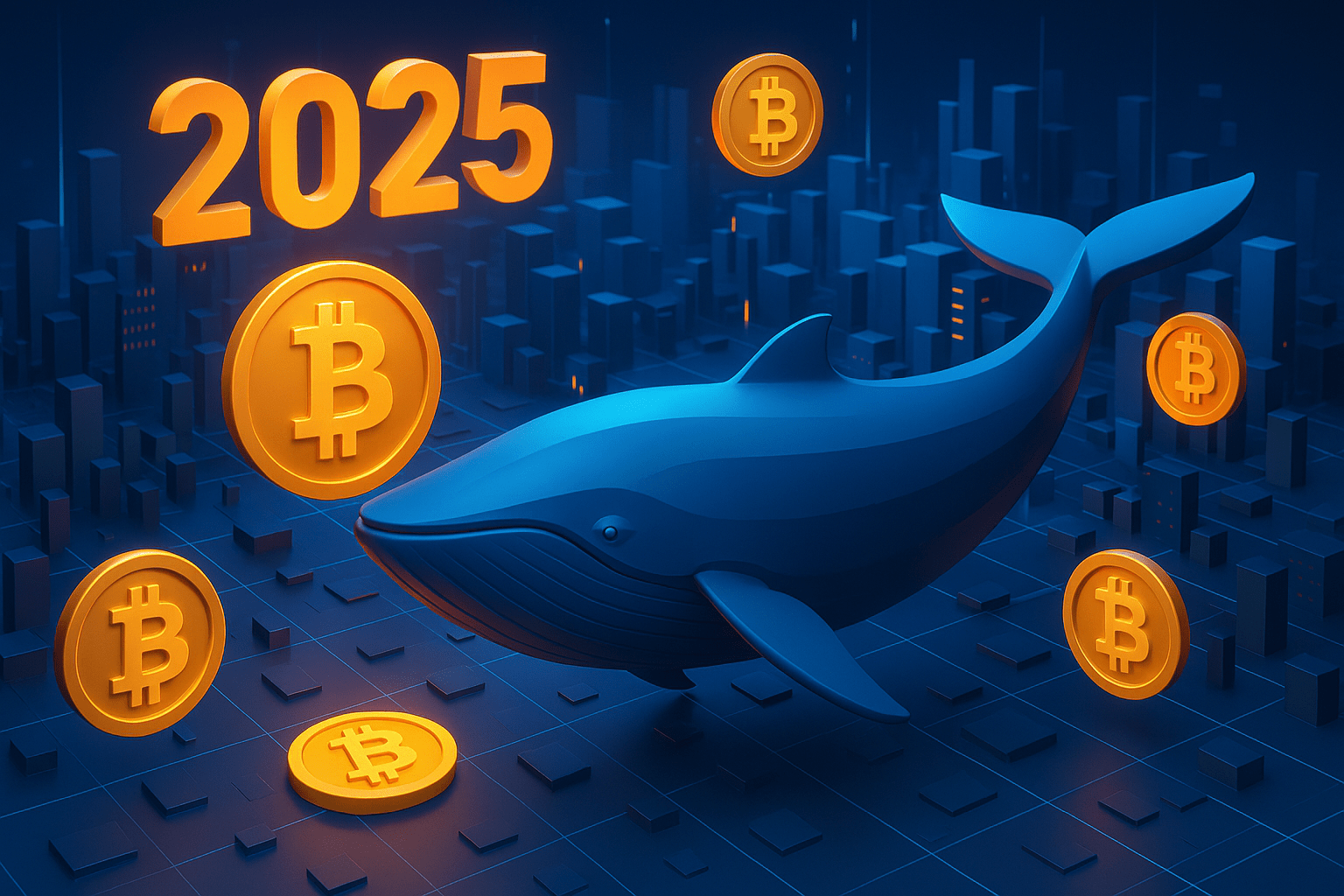
Bitcoin has been around since 2009 and remains a decentralized asset, but its distribution is anything but fair. By 2025, a small group of individuals, companies, and governments holds a massive share of the total supply. These major players directly influence liquidity, volatility, and the overall market sentiment.
Decrypting who these large holders are allows for a better understanding of the power dynamics in the ecosystem and how their movements can affect prices. This is exactly what we will analyze in this article.
What is a Bitcoin "whale" today?
With BTC trading above $110,000 in 2025 and a maximum supply of 21 million coins, owning even a few hundred BTC already represents a small fortune.
But when we talk about "whales", we generally refer to addresses or entities that control thousands, even hundreds of thousands of BTC.
These large holders fall into 3 categories:
Individual whales : People who have accumulated massive positions
Companies and funds : Who store BTC as a store of value or strategic investment
Governments : Who hold Bitcoin, either through direct purchase or via judicial seizures
The companies dominating the game in 2025
Here are the largest corporate holders of BTC according to public data:
MicroStrategy – The undisputed king with over 190,000 BTC. Their aggressive accumulation strategy launched in 2020 continues, boosted by debt raises to grow their stack even more.
Tesla – After reducing in 2022, they returned to the game in 2024 and now hold more than 10,000 BTC.
Marathon Digital Holdings – One of the largest publicly traded miners, with over 17,000 BTC accumulated through their mining operations.
Centralized exchanges – They hold BTC from their users plus their own reserves.
Block (ex-Square) – Jack Dorsey's company that holds Bitcoin on its balance sheet, true to its pro-crypto vision.
Governments are also in the game
Several countries hold significant positions, either by strategy or through seizures:
USA – One of the largest reserves, mainly from seizures (Silk Road and other cases). They auction part but still keep a substantial stock.
China – Despite restrictions, they hold seized BTC from operations against scams.
El Salvador – The first country to adopt Bitcoin as legal tender, they continue to accumulate with thousands of BTC in reserve.
Ukraine – Received donations in Bitcoin during the war, some of which remain in their wallets.
Individual legends and private funds
Even if not everything is public, some figures are known for their massive holdings:
Satoshi Nakamoto – The mysterious creator who has never touched his coins: about 1.1 million BTC.
Early adopters – Investors and miners from the early years who have HODL'd until now.
Specialized crypto funds – Like Grayscale Bitcoin Trust and spot ETFs that aggregate BTC from thousands of investors.
Concentration in numbers: it makes you think
Blockchain analyses reveal that:
~2% of addresses control more than 90% of Bitcoin in circulation (including exchanges and custodians)
Addresses with more than 1,000 BTC are rare but have huge influence
The movements of these wallets can shake the market, especially when liquidity is low
The impact of whales: why it’s crucial
This concentration has major consequences:
Liquidity – When whales move large sums, it creates instant buying/selling pressures.
Sentiment – Transfers to exchanges cause panic (incoming dump?), withdrawals reassure (accumulation).
Stability – Long-term HODLers reduce volatility, active traders amplify it.
Understanding whales is not enough - you need to track their movements because their decisions impact the entire market.
How to track whale movements
The essential tools to track large movements:
Whale Alert – Tracking large transactions in real-time
Glassnode, CryptoQuant – Advanced on-chain metrics (exchange balances, dormancy, activity of old wallets)
Public reports – Financial statements of publicly traded companies and official communications
With this data, we can anticipate trends and adjust positions before large moves.
The future of the Bitcoin "rich list"
With the rise of spot Bitcoin ETFs and the growing interest from countries for strategic reserves in BTC, distribution will evolve.
Concentration could dilute with the arrival of new institutional and retail investors, but some whales - especially early adopters - will likely maintain their dominant positions.
Bottom line: concentration = power = necessary vigilance
Knowing the largest Bitcoin holders is not just trivia. It’s understanding how power is distributed in the ecosystem.
With a limited asset like BTC, every movement of the large holders can upset the balance. For investors, monitoring these wallets is not optional - it's basic risk management.
Did you know how important it was to track Bitcoin whales?
#BaleiasdasCriptos #bitcoin #BTC #whale

